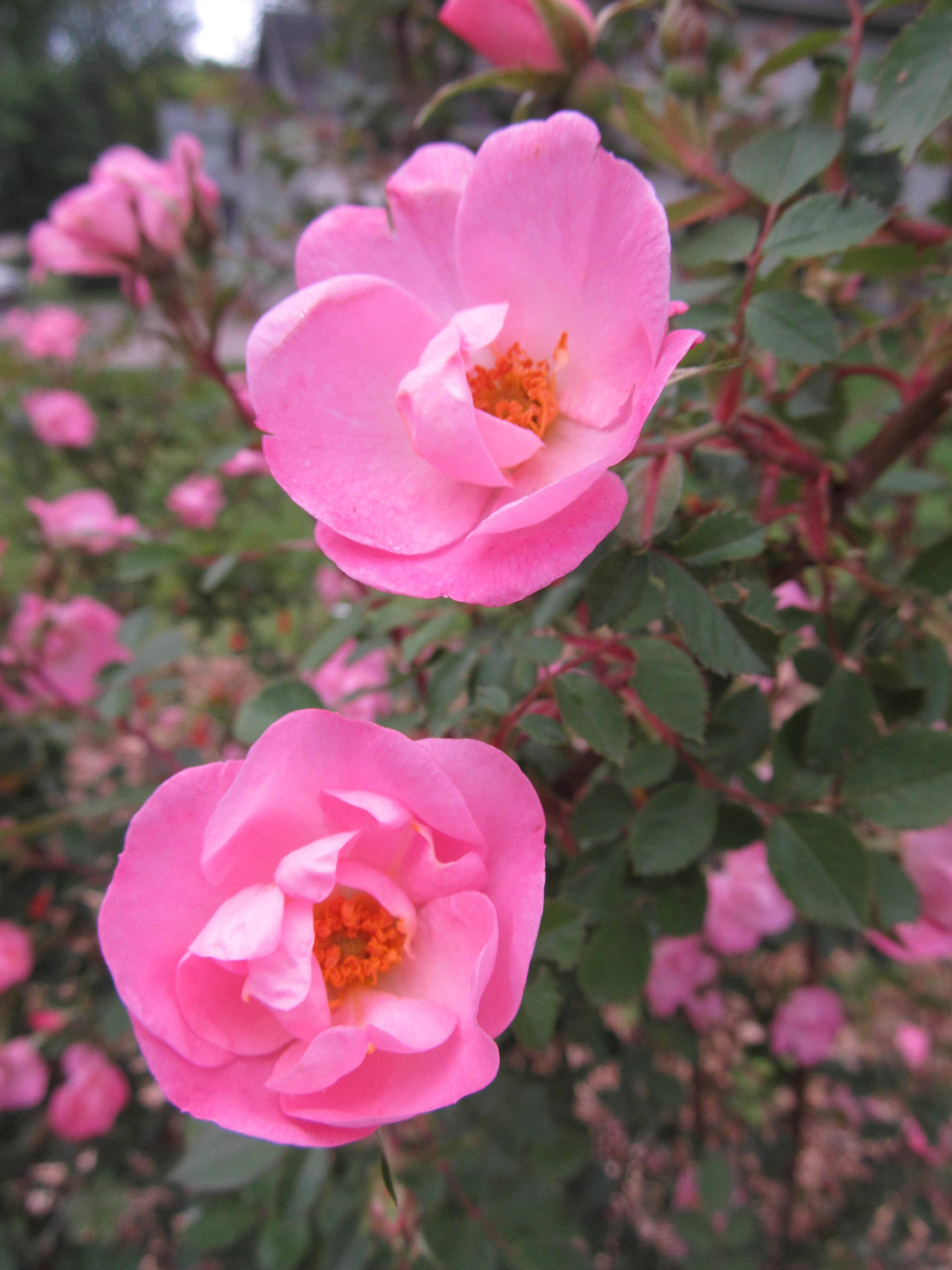Inheritance of fragrance is a complex and puzzling business.
In the case of leaf fragrance, the leaves must possess glands that release the perfume. The quantity and quality of this perfume are separate problems.
Sawyer (1844) wrote:
Sometimes this odour is fruity, as in many varieties of > R. rubiginosa, > Lin. (the “Sweetbriar”) and is developed to such an extent as to be disengaged spontaneously, especially on a warm day, and by the gentle action of the wind after a light rain. All the green parts, especially the lower part of the leaves, contain innumerable oil glands, which, being broken by the slightest friction, exhale an agreeable odour which has been very rightly compared to that of an apple called “Pomme Reinnette,” or in English “Pippin.” The glands of > R. micrantha, > Smith; > R. graveolens, > Pers, and > R. glutinosa, > Sibth. secrete a very similar perfume. The composition of the body contained in these glands is apparently unstudied and little understood, but its odour is suggestive of > valerianale of amyl, > which is now prepared on a large scale for use in flavouring sweetmeats and liqueurs with the flavour of apples.*
The leaves of > R. lutea, > Dalech (> R. Eglanteria, > Lin.), (known also as > R. Capucine> ) possess an odour which is even finer, recalling that of jasmin.
http://bulbnrose.x10.mx/Roses/breeding/SawerPerfumes1894/SawerPerfumes1894.html
Do any Pernetianas possess scented leaves? If so, these might be helpful in recovering the leaf-scent of the Eglantine.
Van Fleet (1921) made an odd comment on the subject:
Blends of Hugonis with garden forms of > R. lutea> , such as Persian Yellow, Austrian Brier, and Austrian Copper, have yearly been attempted and only two weak seedlings secured, but the past season better success in securing seed was had by the use of the type known to botanists by the libelous designation of > R. foetida> . In plant and flower this type is scarcely to be distinguished from the familiar single-flowered form of Austrian Brier, but appears to have more active pollen. There is no unpleasant odor in leaf or flower, but rather a faint sweetbrier fragrance in the young growth on damp mornings.
http://bulbnrose.x10.mx/Roses/breeding/VanFleet/VanFleet1921/VanFleet1921.pdf
I would like to know where Van Fleet got this “R. foetida” that someone distinguished from “R. lutea”, and where it might be found today. But it is still interesting that a hybrid of R. hugonis x R. foetida had fragrant foliage.
It didn’t occur to me to smell the foliage of R. hugonis the last time I encountered it (more than 30 years ago). Has anyone sniffed it lately? Are the leaves glandular?
And this from HelpMeFind:
2 NOV 13 by Coriaceous
The delightful foliage fragrance is much stronger than that of sweet briar > R. rubiginosa> , and has been called the strongest in the genus.
I think it is worth noting that Hurst described R. rubiginosa as ABBCD, indicating that the pollen would carry the B chromosome(s).
R. ecae var. primula would be BB.
At the very least, a cross of Rubiginosa x Primula could produce a yellow(ish) flowered hybrid with a stronger leaf perfume than ‘Lord Penzance’.
From GardenWeb:
Molineux(6b)
REINE DES VIOLETTES has leaves that smell like roses and pepper. On sultry summer nights the foliage fragrance wafts quite a bit. Then there are the gorgeous soft purple flowers.
APPLEJACK is another rose with fragrant foliage, which is redolent of green apples. It will sometimes repeat so is definitely worth investing.
The Floribunda COTILLION / PERFUME PERFECTION has fragrant foliage
http://forums.gardenweb.com/discussions/1643117/fragrant-leaves-whats-with-that
